Rugosomyces carneus (Bull.) Bon - Pink Domecap
Phylum: Basidiomycota - Class: Agaricomycetes - Order: Agaricales - Family: Lyophyllaceae
Distribution - Taxonomic History - Etymology - Identification - Culinary Notes - Reference Sources
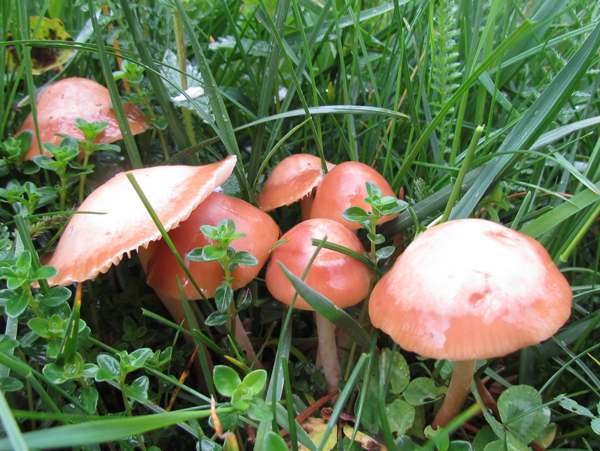
A beautiful grassland mushroom, Rugosomyces carneus is always a joy to see, but this small mushroom is often obscured by taller grasses.
Distinguishing the Pink Domecap from some of the pinkish or reddish waxcaps takes a bit of practice. Key distinguishing features are its dryish cap (except in wet weather) and closely-spaced gills. (Waxcaps have widely spaced gills and most are slimy or greasy; certainly their gills and caps always feel waxy - hence the common name.
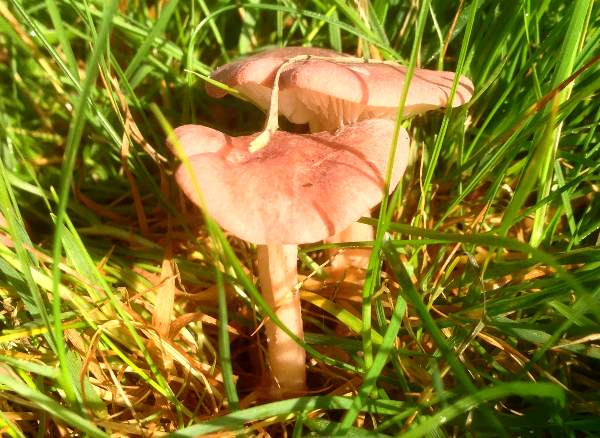
Distribution
A widespread but sadly far from common sight in Britain and Ireland, the Pink Domecap occurs throughout most of Europe and is also recorded in many parts of Asia and North America.
Taxonomic history
This lovely grassland mushroom was first described in scientific literature in 1792 by the French mycologist Jean Baptiste Francois (Pierre) Bulliard, who gave it the binomial name Agaricus carneus. (Most gilled fungi were placed in the Agaricus genus in the early days of fungal taxonomy, but the majority have since been relocated to new genera.) This basionym was subsequently sanctioned by Elias Magnus Fries. Its currently-accepted scientific name Rugosomyces carneus dates from a 1991 publication by latter day French mycologist Marcel Bon (1925 - 2014).
Synonyms of Rugosomyces carneus include Agaricus carneus Bull., Tricholoma carneum (Bull.) P. Kumm., Lyophyllum carneum (Bull.) Kühner & Romagn., and Calocybe carnea (Bull.) Donk. (The latter binomial is still used in several current field guides as well as in most older books.)
Etymology
The specific epithet carneus comes from Latin and means 'coloured like flesh'.
Identification guide
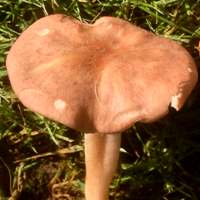 |
Cap1.5 to 4cm across; convex, expanding and sometimes flattening completely, sometimes with a central depression and a low umbo; often developing a wavy downturned or inrolled margin; usually pink but sometimes mainly white with pink tinges; smooth and dry. The cap flesh is whitish. |
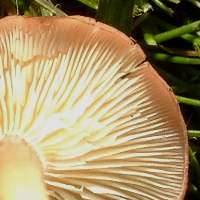 |
GillsAdnate or emarginate, crowded; white or pale cream. StemCylindrical, 2.5 to 4cm long and 0.3 to 0.6cm diameter; colour pink as cap but usually somewhat paler and pruinose near the apex; smooth, with fine longitudinal fibres; no stem ring. The stem flesh is whitish. |
SporesCylindrical with rounded ends, smooth, 3-7 x 2-3µm. Spore printPale cream or white. |
|
Odour/taste |
No significant odour; taste mild but not distinctive. |
Habitat & Ecological role |
Saprobic, in cropped or mowed grassland including lawns, parkland and heathland; sometimes on broadleaf woodland edges and in woodland glades. Occasionally occurring solitarily but most often in small groups. |
Season |
Mainly July to October in Britain and Ireland. |
Similar species |
The Pink Domecap could be mistaken for a waxcap mushroom such as the Meadow Waxcap Cuphophyllus pratensis or the Pink Waxcap Porpolomopsis calyptriformis. The waxy texture of the gills of Hygrocybe species helps separate them from other colourful grassland mushrooms such as the Pink Domecap. |
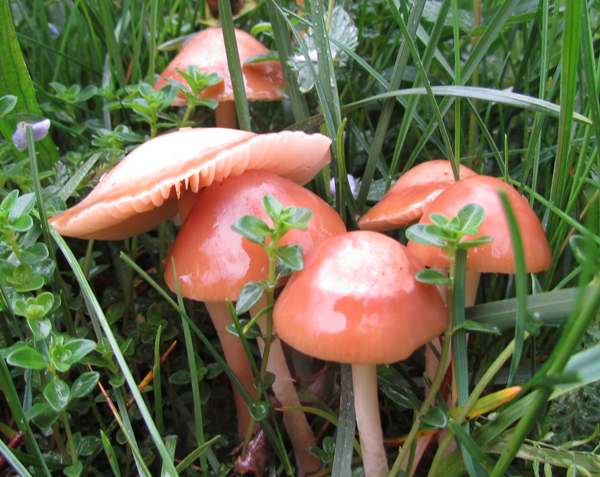
Culinary notes
Rugosomyces carneus is reported to be edible, but we have no personal evidence for this claim.
Although for many years many other Domecap mushrooms (Lyophyllum species) were considered to be good edible fungi, doubts have been cast recently about some of them, as one research source reported finding toxins in these fungi capable of causing DNA mutations. Those findings have been challenged by other researchers, but in view of the uncertainty we advise against gathering Lyophyllum domecaps for human consumption.
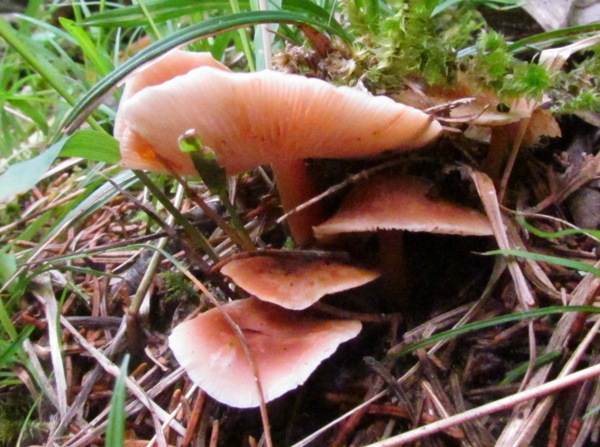
Reference Sources
Funga Nordica: 2nd edition 2012. Edited by Knudsen, H. & Vesterholt, J. ISBN 9788798396130
British Mycological Society, English Names for Fungi
Dictionary of the Fungi; Paul M. Kirk, Paul F. Cannon, David W. Minter and J. A. Stalpers; CABI, 2008
Taxonomic history and synonym information on these pages is drawn from many sources but in particular from the British Mycological Society's GB Checklist of Fungi.
Acknowledgements
This page includes pictures kindly contributed by Simon Harding.
Fascinated by Fungi. Back by popular demand, Pat O'Reilly's best-selling 450-page hardback book is available now. The latest second edition was republished with a sparkling new cover design in September 2022 by Coch-y-Bonddu Books. Full details and copies are available from the publisher's online bookshop...

